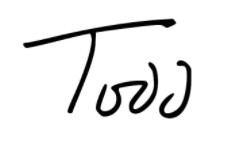 A few weeks ago, Chinese authorities charged that a US U-2 spy plane had violated Chinese air space during a People’s Liberation Army training exercise. The most pointed detail of China’s claim was the reference to the U-2, a 65-year-old aircraft with a fabled Cold War history.
A few weeks ago, Chinese authorities charged that a US U-2 spy plane had violated Chinese air space during a People’s Liberation Army training exercise. The most pointed detail of China’s claim was the reference to the U-2, a 65-year-old aircraft with a fabled Cold War history.
The U-2 became famous on May 7, 1960, when Soviet Premier Nikita Khrushchev announced that a Soviet Surface-to-Air Missile had shot one down, and the pilot, Francis Gary Powers, had been captured. President Dwight Eisenhower had previously denied the U-2 had been spying, or that it was even a spy plane. The American cover story was that the U-2 was a NASA aircraft used for weather observations (US officials even hastily painted a U-2 in NASA colors and trotted it out for the media). Khrushchev revealed the truth: the U-2 was a CIA plane designed specifically to fly at super-high altitudes for global surveillance.
Since that day, the U-2 has served as an icon of Cold War tensions, inspiring a famous rock band’s name and, most recently, a Stephen Spielberg movie about negotiating Francis Gary Powers’ release.

It’s hard to believe the U-2 is still in operation decades after President Eisenhower first ordered the manufacture of a plane that could fly at 70,000 feet—beyond the reach of Soviet fighters and radar. Lockheed engineers worked in secret, by hand, during off hours to design the craft and fabricate its parts.
The first test flight was on August 1, 1955. The runway was a dry lake bed in remote Nevada, a location later known as “Area 51.” Test pilots wore full pressure suits—at 70,000 feet, the atmosphere was barely thick enough to keep a plane aloft, and loss of pressure would make the pilot’s blood boil. In an era before satellites or integrated circuits (or zip codes or touch-tone phones for that matter), the U-2 was the most advanced aerospace technology in the world.
Since that first flight, the U-2 has flown in every major US military operation of the past 65 years. A U-2 spotted Medium-Range Ballistic Missiles on Cuba in October 1962, prompting the famous October Missile Crisis. U-2s gathered surveillance over Vietnam, the Eastern Bloc, and the Middle East. They were even successfully launched from aircraft carriers (the USS Ranger and the USS America) in the late 1960s. Receiving its last major modification in the 1980s, the U-2 outlasted not only the Cold War, but its own replacement plane, the SR-71, which was retired in 1998.
The U-2 has defied all predictions of its demise —the plane has been targeted for the military budget chopping block for over fifteen years. It was saved most recently in 2014, largely because of its service in Iraq and Afghanistan. Unlike satellites, the U-2 is nimble and can change surveillance objectives on short notice. Give a pilot eight hours in a U-2, and he or she can map the state of California and even read a headline from a corner newsstand.
 A few other airplanes rival the U-2 in longevity—the Boeing KC-135 Stratotanker, Boeing B-52 Stratofortress, and Lockheed C-130 Hercules come to mind. But none of these has had to compete with satellite and drone technology to survive. None but the U-2 has managed to sustain its mystique through the space age.
A few other airplanes rival the U-2 in longevity—the Boeing KC-135 Stratotanker, Boeing B-52 Stratofortress, and Lockheed C-130 Hercules come to mind. But none of these has had to compete with satellite and drone technology to survive. None but the U-2 has managed to sustain its mystique through the space age.
That mystique is one of the reasons China responded so vocally to the U-2’s surveillance operations. The US denied violating air space, though not the spying.
“U-2s have long-distance surveillance systems now,” explained one analyst. They don’t need to violate air space to get good images below. They can monitor ground activity from dozens of miles away.
If there is a new Cold War with China on the horizon, the U-2 will no doubt be a part of it.



